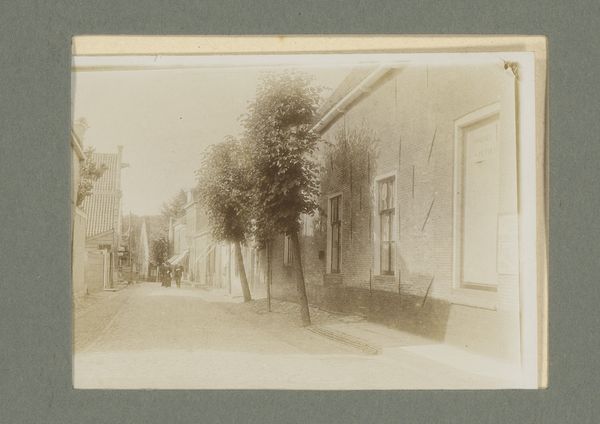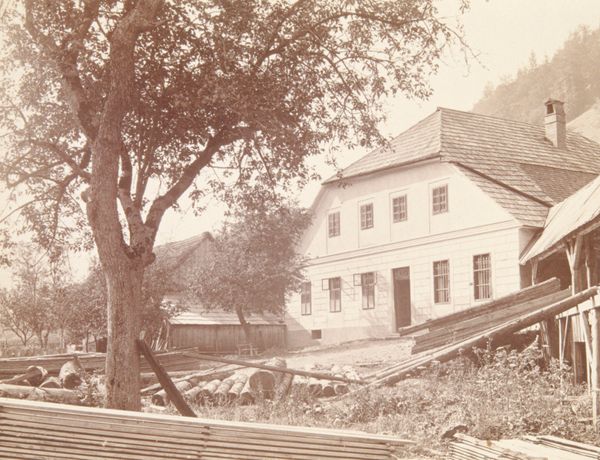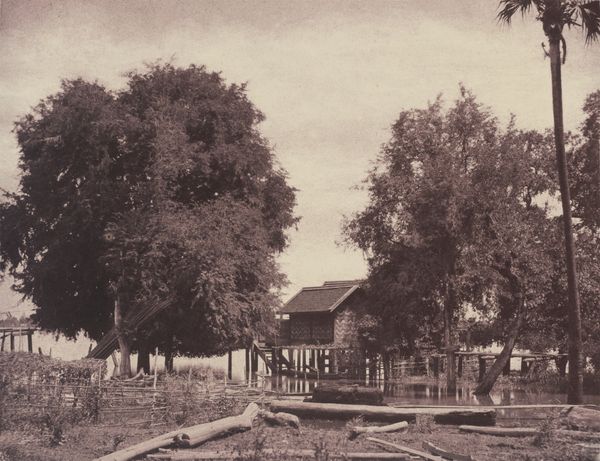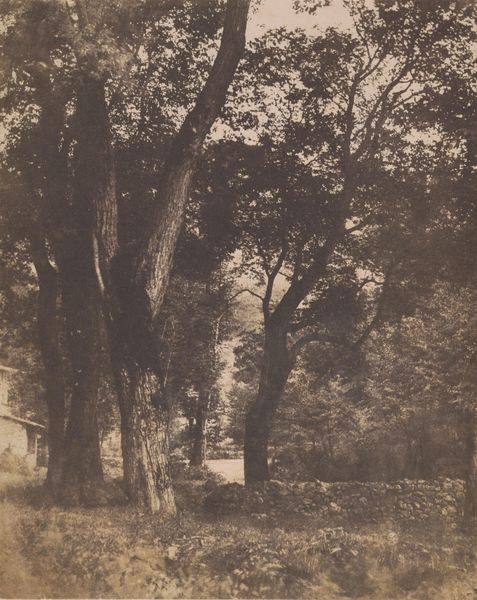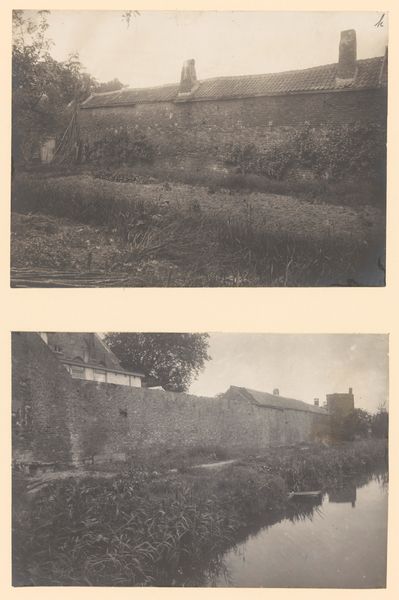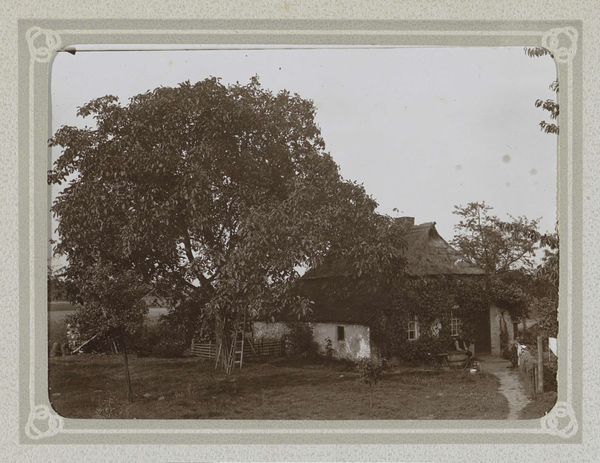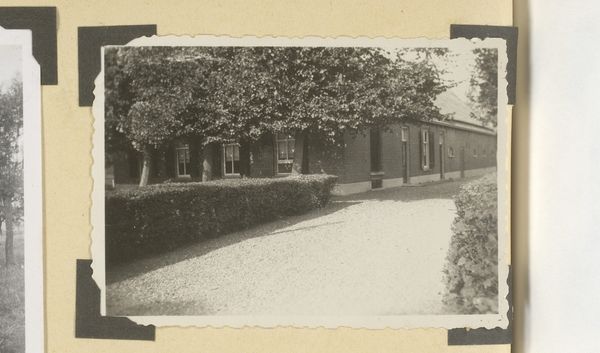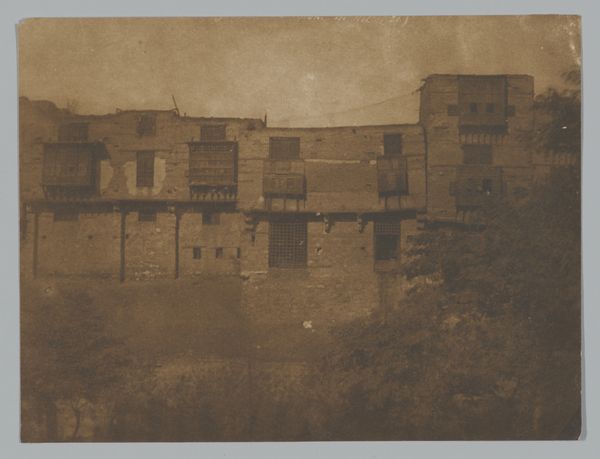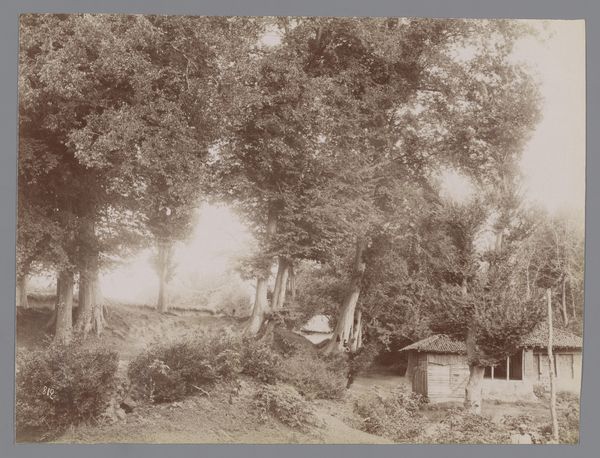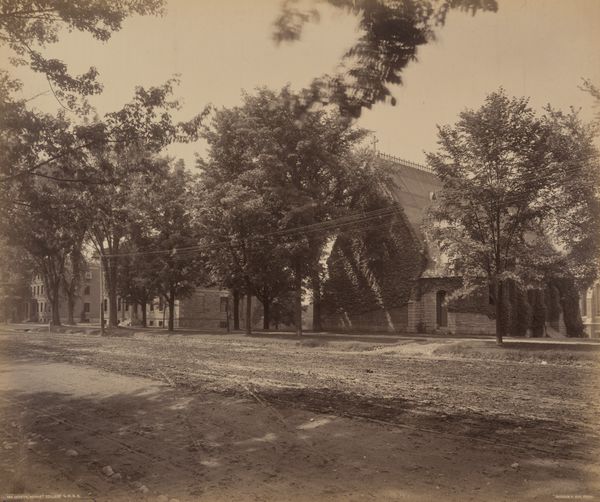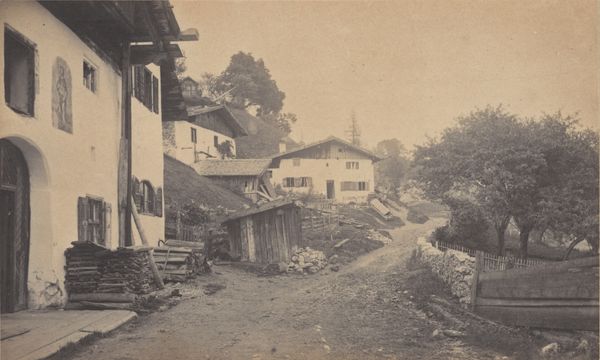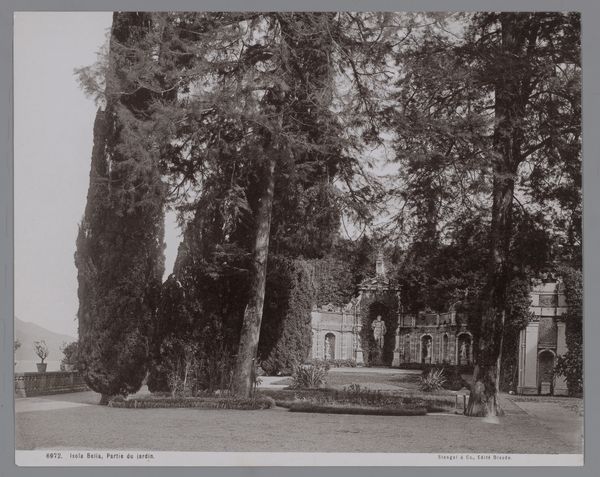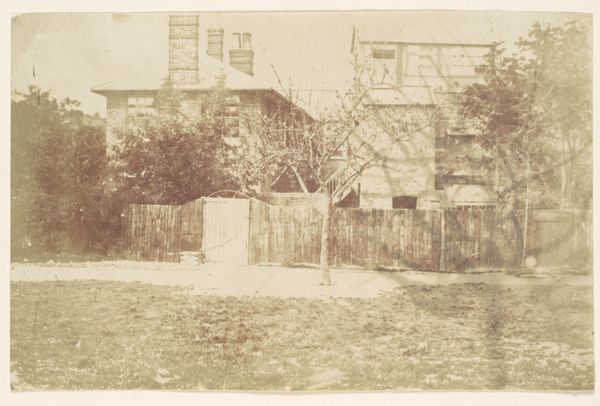
photography, gelatin-silver-print
#
water colours
#
impressionism
#
landscape
#
photography
#
gelatin-silver-print
#
19th century
Dimensions: image: 18.4 x 10.9 cm (7 1/4 x 4 5/16 in.) page size: 21.6 x 13.5 cm (8 1/2 x 5 5/16 in.)
Copyright: National Gallery of Art: CC0 1.0
Curator: Welcome. Today we're looking at "Mittenwald," a gelatin-silver print by Alfred Stieglitz, taken in 1886. Editor: The muted tones immediately create this feeling of nostalgia. It feels simultaneously intimate and grand because of the sharp details despite the washed-out color. Curator: Stieglitz’s composition is brilliant; he manipulates the grayscale tones, achieving a soft focus and a remarkable depth of field. Note how the road guides our eye toward the background. Editor: Absolutely. Look at the visible labor: the cobblestone street, the wood piles, even the roughhewn bucket in the foreground. These speak to the working-class setting that's central to the landscape's narrative, wouldn't you agree? Curator: Undeniably. But it’s more than just depiction; it’s about the contrast. Stieglitz expertly balances dark and light, creating this interplay of texture that accentuates the overall structure. Editor: Thinking about it, this could be a depiction of daily existence—construction, decay, all of it held together within a specific geography that would provide meaning to workers in Mittenwald at that time. It also demonstrates Stieglitz's skillful work in the darkroom in relation to manipulating those chemical processes, which is no easy task. Curator: True. Consider the period too; 1886. Stieglitz embraces the new photographic techniques available at the time, creating an artistic style that goes beyond pure representation, wouldn’t you agree? Editor: Perhaps his vision gives an aura of working-class toil beyond aesthetics, but both factors play important roles here, yes? Curator: Definitely. Ultimately, it showcases Stieglitz’s command of photographic techniques and also reflects on social elements; it represents daily life and materiality that invites deeper analysis. Editor: Indeed. And in many ways it's an artifact of a world gone by, and how labor, materiality, and setting interplay and were preserved through those meticulous chemical processes. Thank you for diving into this piece with me.
Comments
No comments
Be the first to comment and join the conversation on the ultimate creative platform.
